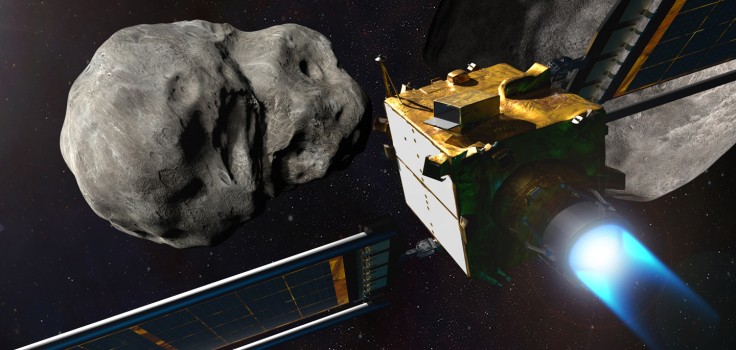
NASA's asteroid-redirecting spacecraft could be stronger than expected.
Experts at the University of Bern recently revealed that NASA's Double Asteroid Redirection Test (DART) spacecraft not only redirects asteroids from their original path but also leaves a crater behind and deforms the asteroid when it does, per Space.com.
NASA's DART spacecraft was initially intended to redirect asteroids that could pose a real threat of colliding with Earth, per NASA's Planetary Defence Coordination Office (PDCO) webpage.
NASA DART Mission New Discoveries
Experts at the University of Bern alongside those from the National Center of Competence in Research (NNCR) PlanetS have found that NASA's DART spacecraft could deform its target asteroid, Dimorphos, rather than just leave a crater.
Sabina Raducan, the study's lead, explained that asteroids could have a very loose internal structure similar to a pile of rubble. In the case of an asteroid, the pieces are held together by gravitational interactions and small cohesive forces, as evidenced by an earlier space mission from the Japanese Space Agency, the Hayabusa2 mission.
However, previous simulations of the DART mission impact mostly assumed a solid piece of space rock rather than a pile of space rock. Thanks to this assumption, Raducan believes that NASA's DART spacecraft could completely deform Dimorphos.
Raducan also believes that once the spacecraft hits Dimorphos at its intended speed of 24,000 kilometers an hour, the impact could eject more materials than previous estimates predicted.
The simulation was necessary as impact conditions cannot be replicated in laboratory experiments, and the long and complex process of crater formation following such an impact made t impossible to realistically simulate the impact processes up to now.
However, Raducan and their team used a "novel modelling approach" that takes the propagation of the shock waves, the compaction, and the subsequent flow of material into account.
The new model allowed experts to simulate the entire cratering process resulting from impacts on small asteroids like Dimorphos in a laboratory.
Raducan is from the Institute of Physics and the NCCR PlanetS at the University of Bern.
What Is NASA's DART Mission?
NASA's DART mission is part of the PDCO methods against near-Earth objects like asteroids and comets, per NASA.
NASA's PDCO is tasked to find possible threatening near-Earth objects, and warn the government, media, and the public of a potential collision. In the event of a threatening near-Earth object being found, it will also coordinate with other government agencies to create a national plan to combat the collision's effects should it happen, and mitigate the risk of the impact happening. This is where NASA's DART spacecraft comes in.
The DART spacecraft is still in its testing phase, and as such, NASA will be redirecting a non-threatening asteroid to see if it works to gauge if the spacecraft can do the same with an earth-threatening asteroid.
The DART mission is the first-ever mission dedicated to investigating and demonstrating one method of asteroid deflection by using kinetic impact to change the space rock's path.









